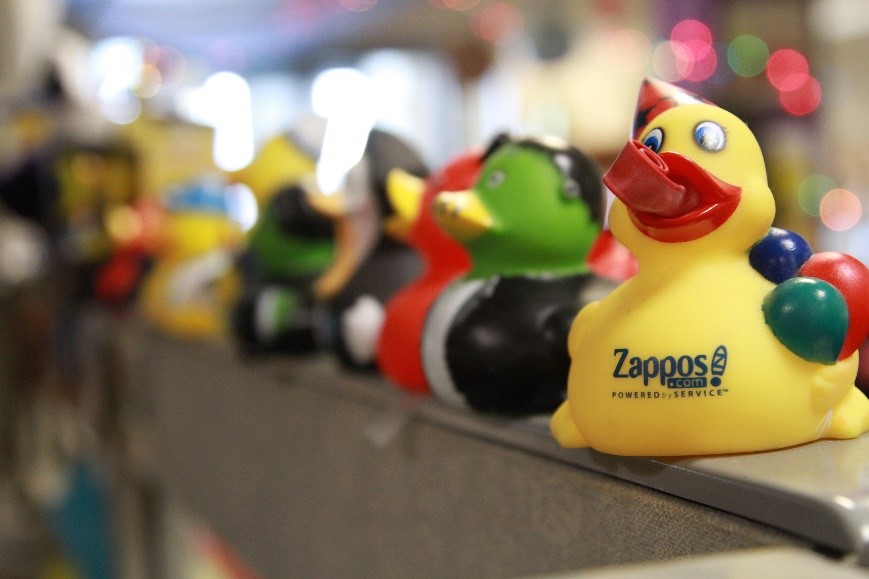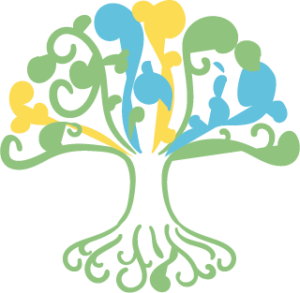Interview with Tyler Williams of Zappos, Fungineer and Head of Experiential Marketing
Originally started as an online shoe retailer, Zappos grew from having traditional customer service as a priority to ‘delivering happiness’. After becoming a holacracy organization in 2013, Zappos is currently organized in 500 self-governance teams called circles, which the teams refer to as a ‘city’ organization. There are no job titles or traditional roles.
The provision of the personalized, entertaining experience of buying its products online matches to some extent the company purpose: Zappos is about delivering happiness to the world. How has the consumer shoe service been transformed into ‘delivering happiness’? The company culture at Zappos is seen as the long-term brand. In order to understand Zappos, it is pivotal to understand the whole spectrum of its company culture as it extends to customers, employees and community.
We will explore three elements that organizational culture manifests: artifacts, assumptions and values.
Artifacts & Assumptions – Adult Playground
Visiting Zappos is like entering a wonderland – an open space filled with party decorations, personal objects, a huge wall sculpture with cut ties, a ball pool, with super heroes and Tutu-dressed staff walking around. There is a large ‘giving’ aspect towards the Zappos employees (free food and drink), the customers (offering flowers and postcards), and the community (a huge range of projects including: Adopt-a-highway, Porta Party high-tech portable toilets, Pawlidayz, Matching Up to $1 Million donation for Las Vegas and paying victims funeral expenses).
The stories are often linked to a ‘tribe’ aspect and, when I asked Tyler for a fairy tale that he would associate with Zappos, he proposed the high-fantasy adventure story of Lord of the Rings. The whole Zappos organization has quarterly team off-site meetings and New Year parties, generating shared experiences and affirming the total organizational culture. Stability of the group is driven by the strength and degree of internal consistency and openness to the positive reinforcement of learnings.
Common assumptions provide meaning, stability and comfort. An interesting and unique assumption, considering that the majority of the employees are either customer service reps or warehouse staff, is that getting into Zappos is harder than getting into Harvard. Another key common internal and external perspective is that it is fun to work for this company, i.e. people are happy to go to work. Zappos consistently emphasizes a positive attitude, and has a rule of saying NO only once a day.
The company office is often referred to as a weird creative space, potentially leading to assumptions of Zappos as somewhere for people to unfold, a place where everybody can shine, and where integration between work and life is encouraged, if not enforced – Zappos is more than a place to work, it is a lifestyle. With a culture firmly focused on the ‘wholeness’ of its staff, ‘craziness’ is present in both the Zappos office and after work. In the face of such close integration of work and life, and the pervasive culture of positivity and happiness, how much room is there for anxiety?
Zappos Values
Core cultural values are captured in the Zappos Culture Book; employees were asked to write about what the culture meant to them and hundreds of testimonies were compiled and shared with employees, customers, suppliers. These testimonies are personal stories of engagement and experience of working in the group flow and subsequent happiness in which we lose sense of time, self-awareness and even self. Tyler proposed a metaphor of Zappos as a living organism and indicated that the company is currently working on market-based dynamics, with a new operational system to be publicly released in 2020.
Core values are strongly embedded in the Zappos company culture and they are part of the integration system (newcomers to the company are offered payment to leave if they find that they do not match with the core values) and in the performance evaluation. One of core value is: embrace and drive changes. When I discussed this core value with Tyler, he indicated that there are a number of things that are not working and are challenging.
The system is far from perfect, and the company is taking a positive look at mistakes as potential opportunities for learning and growing; continuously working to improve, not always finding the answers, but being willing to take the learning journey. The company often identifies individual differences among teams: early adapters for changes (usually monitored to ensure that changes are not adopted too fast and for their connection to resistant groups), neutral (need to know more), resistant, very resistant.
Change is a constant in the company and employees need to accept that. Learning not to fear change, to embrace actively and to encourage and drive change is key. Changes can come from different directions, with most Zappos changes being driven from the bottom up, i.e. from the people who have the direct contact with the customers while experiencing their purposeful tasks. Tony Hsieh, the Zappos CEO, has stated his belief in the importance of not accepting the status quo “we must continually change and keep them guessing”.




